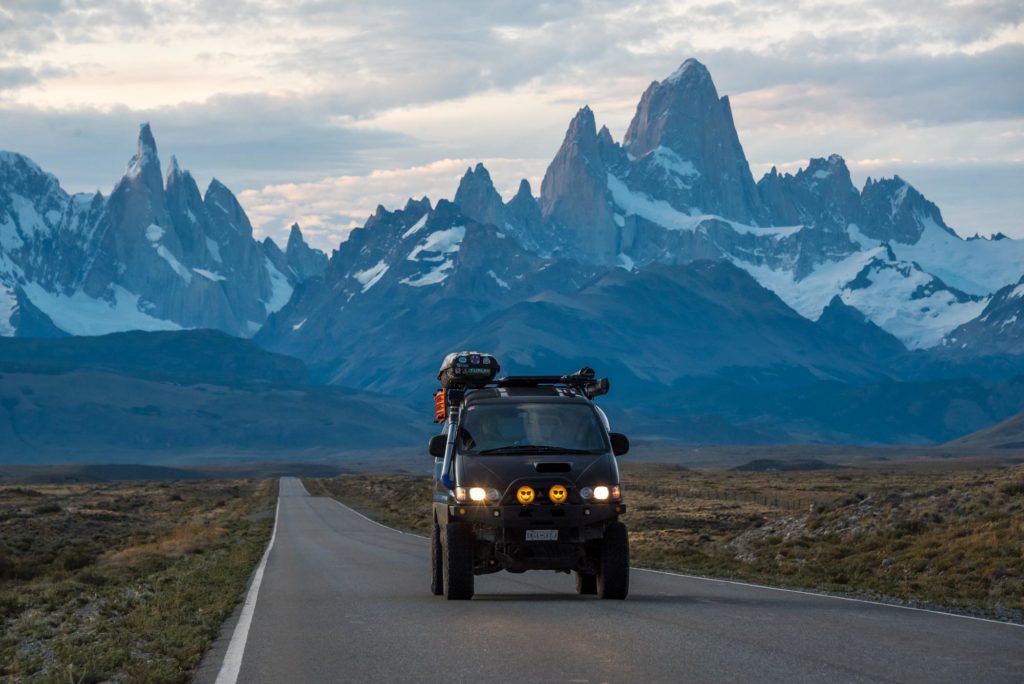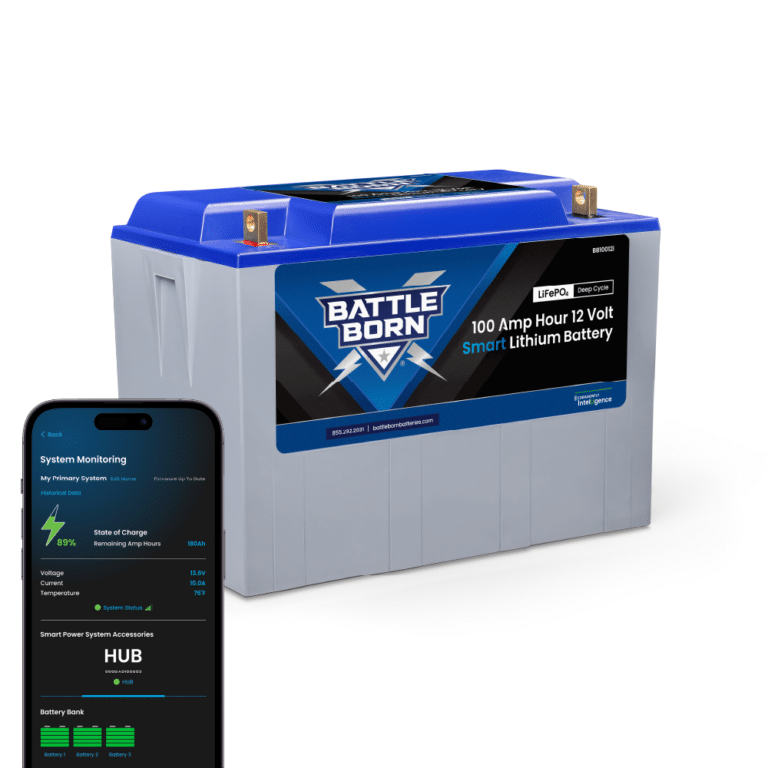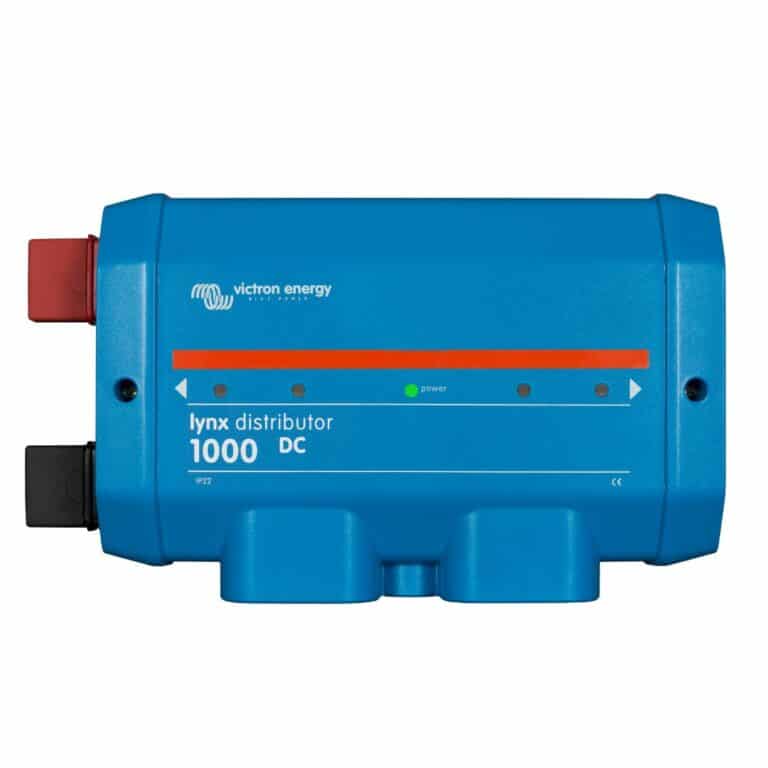
MENUMENU
TALK TO AN EXPERT
Special Hours: 7AM – 6PM PST
TALK TO AN EXPERT
Special Hours: 7AM – 6PM PST
There’s nothing like the thrill of leaving the pavement behind and exploring the wild while still enjoying the comforts of your overland rig. But while overlanding may be a thrill, dealing with the rig’s power system isn’t most people’s idea of a good time. However, the right overland battery setup can be a game-changer for your next adventure. Let’s take a closer look at how it all works and how to pick the best overland battery.

Overlanding may be a chance to rough it and get out in the wild, but that doesn’t mean you need to give up some of the comforts of home and the necessary systems for getting you where you’re going. However, out in the backcountry, you won’t find any outlets or shore power to keep things charged. That’s why batteries are such a crucial part of any overland setup.
In addition to powering necessary things like the engine, headlights, and radios, batteries need to provide electricity for camping. Overlanders can accomplish this either with one battery bank shared between these two uses, or a dual battery bank setup.
Dual battery setups use one battery for vehicle uses (a “starter battery”) and a completely separate one for things that make you feel at home (a “house battery”). The dual setup is preferred as the engine battery requirements are very different from the “house” or camping requirements.

Some people get by with an overland battery setup with just a single battery. But all too often this can lead to a dead battery, potentially stranding explorers in an uncomfortable or even dangerous situation. While it may not be strictly necessary, a dual battery setup is without a doubt the gold standard for overlanding power.
We’ve already mentioned the ability to power different portions of an overlanding rig’s electrical needs through different batteries. This provides many more options for accessories and other systems using their own dedicated power.
Dual battery setups also offer the distinct advantage of allowing overlanders to use their camping batteries without worry of not being able to start the engine, providing an additional level of protection. In addition, the second battery bank can even act as a self jump starter. This is accomplished by wiring the two batteries in parallel through a relay or isolator.
Another reason a dual battery setup is recommended is that the engine starting battery has a very different job than the house batteries. Starting an engine requires an enormous amount of power for a very short period of time, after which the engine immediately recharges the battery.
House batteries need much less power but to run for a long time and discharge the battery deeply. For this reason, lithium batteries, like our Battle Born Batteries, are best for house or camping batteries and a lead-acid or AGM is best for starting.

Best of all, the downsides are minimal to a dual battery setup. Among the only negatives of a dual battery setup is the cost. Overlanders will need to purchase an extra battery as well as the isolator technology. In addition, they’ll need to pay for a professional to modify their electrical setup if they’re not comfortable doing these upgrades on their own. All of this can impede overlanders looking to explore on a tight budget.
For myriad reasons, lithium-ion batteries are by far the best choice for an overland battery setup. This advanced battery technology can help improve overland electrical systems and provide some potentially unexpected benefits to your rig.
However, it’s important to note that despite these many advantages, lithium batteries aren’t starter batteries. Traditional batteries, like flooded lead-acid, or modified versions, like AGM or gel, still perform this task better.
No matter what route you’ve chosen, overlanding is generally a fairly rough ride—not just for drivers and passengers, but for their batteries too. Typical lead-acid batteries rely on lead plates set in an electrolyte solution. This style, unfortunately, presents some downsides in these rougher situations. On the other hand, lithium batteries use a different chemical process to produce energy. This provides some additional durability for overloading adventures, along with new possibilities for how to mount your battery.
Battle Born Batteries are rugged and can be mounted in any direction. They do not need ventilation offering a wide range of location mounting options. They also do not offgas, leak, or corrode so they will stay clean.
Overlanders need to be self-reliant while out on an adventure. All of those supplies can be pretty heavy! At the same time, overlanders need to be careful not to exceed their vehicle’s gross vehicle weight rating (GVWR). This is a measure of the maximum amount your vehicle can weigh with all passengers and cargo inside. Subtract the vehicle’s curb weight (its weight while empty) from the GVWR to find the additional weight you can add.
Lithium batteries tend to weigh significantly less than their traditional counterparts in an overland battery setup. This means overlanders upgrading to lithium will enjoy the same amount of power as before. Plus, they’ll have more weight available for other essential items.
In addition, there are handling concerns to keep in mind, as well. A heavier vehicle may be more challenging to handle on unpaved overlanding adventures. This makes it harder to navigate and brake. While lithium batteries may not save drivers a massive amount of weight on their own, they’re an easy way to start cutting back overall.

Many overlanders have, unfortunately, dealt with the hassle of a dead battery while out on an adventure. This isn’t just annoying—it can be dangerous in some situations. But there’s no need to let a dead battery keep you in the dark.
Lithium batteries provide much longer-lasting power than their lead-acid counterparts. They have greater storage capacity for their weight and size and hold their charge longer. They can even be more deeply discharged than lead-acid batteries.
Charging batteries isn’t anyone’s idea of a good time, especially overland enthusiasts who’d rather be hitting the road. The good news is that lithium batteries provide far faster charging capabilities than traditional ones. This can translate into dozens of hours saved over the course of a long trip, which makes them great for an overland battery setup.
There’s also a more technical reason that allows lithium batteries to be charged less frequently. It relates to a concept known as Peukert’s Law. In the simplest terms, this law shows how lead-acid batteries actually have a lower capacity than might be expected when they’re discharged at a high rate. However, due to differences in battery chemistry, this issue isn’t present in lithium batteries. Therefore, users are free to run them at high usage rates without suffering an overall loss of capacity.
Old lead-acid battery technology also needed to be charged fully each time to preserve battery life. This is rarely possible when on the trail so they would die prematurely. Lithium batteries do not have this requirement and they can be charged and discharged at any point without damaging the battery.

As impressive as lithium batteries can be, they don’t charge themselves. There are several different ways to ensure batteries have the juice overlanders need when they need it.
In the same way that an alternator charges a typical vehicle’s battery, overlanders can create a similar setup for their lithium batteries. This process takes the mechanical energy from your engine (powered by gas) and turns it into electrical energy stored in your batteries. This will require a modification to your vehicle’s electrical system. You’ll also need technology like a battery isolator to protect your starting battery.
Because lithium batteries charge so much faster, it is possible to damage your alternator by connecting them to a lithium bank. This can be mitigated by using a DC-DC charge controller or a Li-BIM that will disconnect the batteries every so often.
Those looking for a renewable way to juice up while overlanding may opt for solar for their overland battery setup. Solar power systems convert the energy from the sun into electrical energy using solar panels.
Keep in mind that the size of your panel will limit your energy generation. You have to mount the panel on your vehicle or store it inside. If you store it, you have to set it up and take it down to charge. For those relying solely on solar, it’s crucial to be aware of energy usage versus energy generation, including factors like the weather.
We’ve mentioned dual battery systems above. It remains one of the best solutions for powering your rig with lithium. With a dedicated starter battery and separate house battery, worries about dead batteries should be a thing of the past. While some may be able to get by with a single battery powering both the vehicle and any accessories, it’s typically riskier and far less versatile.
Unfortunately, overlanders who opt for solar may find it falling short of their daily energy needs due to the lack of panel space, bad weather, or both. Therefore, users may want to combine solar with an additional charging method.
This could include the methods described above, like using the alternator. It could also include other systems, like portable wind turbines set up at camp every evening. Users will need to properly integrate and connect the systems to their batteries, which could be complicated.
There’s no one-size-fits-all answer to this question. The number of batteries you need will depend on both daily power usage and charging capabilities. The easiest way for overlanders to figure out how much capacity they need is to audit their electrical system. They can look at how many watts each item draws when turned on and how much energy will be used simultaneously. Then, divide the wattage by the system’s voltage to find the number of amps drawn from the battery.
Battery capacity is measured in amp-hours, meaning that for lithium batteries, a 1-amp device running for 10 hours will draw the same amount as a 10-amp device running for one hour. Factor in how much energy you can restore each day through charging. This will reveal the overall energy debt or surplus each day. Based on this, overlanders can size their batteries appropriately, which usually means installing a single house battery or, in some cases, two.
There’s nothing worse than not having power when you need it, and that’s especially true when you’re on an overland adventure in the middle of nowhere. That’s why it’s crucial to equip your rig with the best overland battery and overland battery setup. In most cases, this will be lithium. Despite some upfront costs, these long-lasting, durable, lightweight batteries will keep the lights on for many adventures to come.

We know that building or upgrading an electrical system can be overwhelming, so we’re here to help. Our Reno, Nevada-based sales and customer service team is standing by at (855) 292-2831 to take your questions!
Also, join us on Facebook, Instagram, and YouTube to learn more about how lithium battery systems can power your lifestyle, see how others have built their systems, and gain the confidence to get out there and stay out there.
Shop Best Sellers








Ask a technical specialist now at 855.292.2831
Stay in the Know